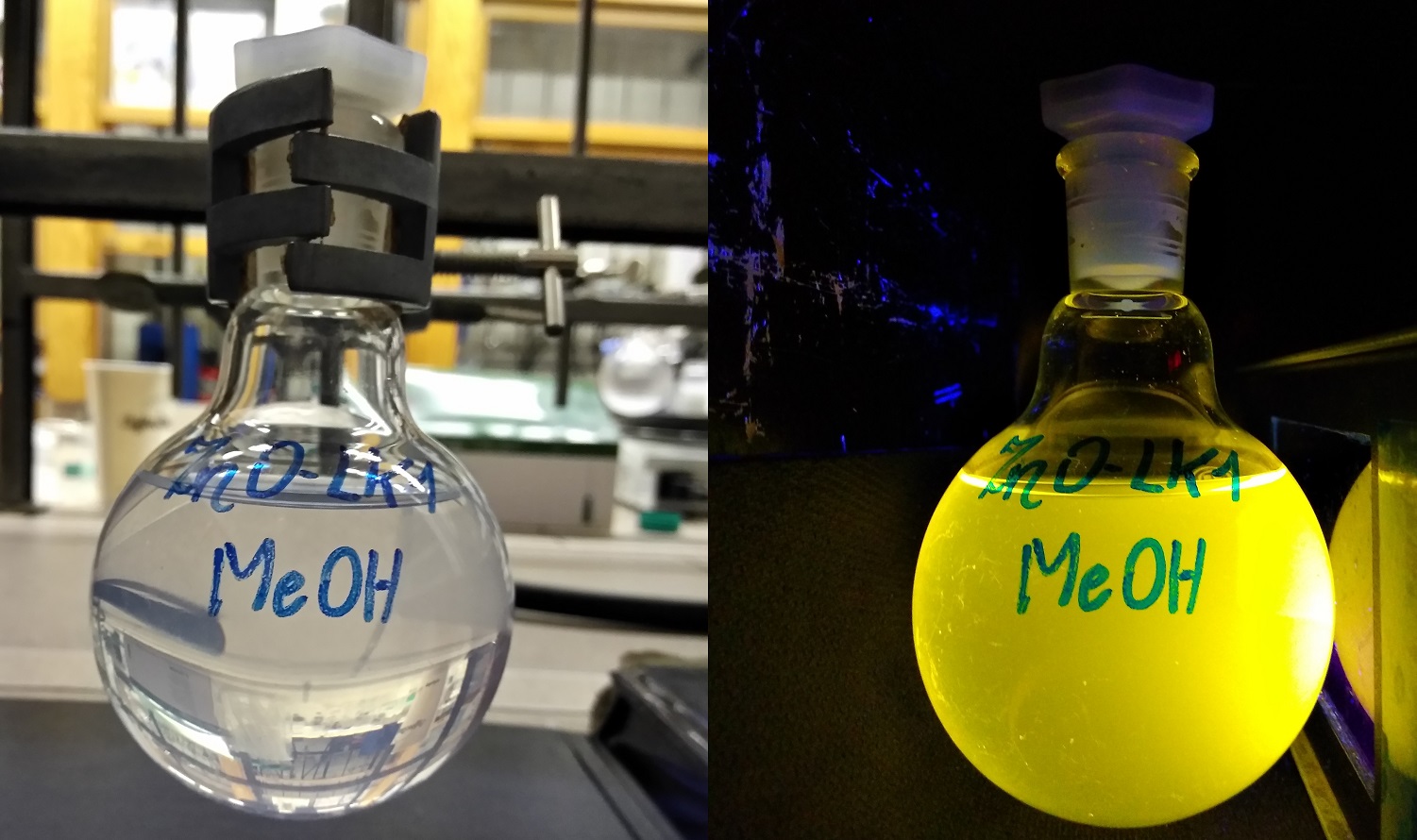New method for the production of quantum dots of zinc oxide

Team from the Faculty of Chemistry (from the left): Zygmunt Drużyński, MSc, Małgorzata Wolska-Pietkiewicz, PhD, Maria Jędrzejewska, PhD, Prof. Janusz Lewiński
Nanocrystalline forms of zinc oxide demonstrate great application potential in optoelectronic and photovoltaic technologies. They can be used in medicine and nanodiagnostics, as well as as a luminescent pigment for paints and varnishes. A new method of producing this type of materials has been developed by WUT researchers.
Nanocrystalline zinc oxide (ZnO), and in particular zero-dimensional quantum dots (QDs), are widely used in light-emitting diodes and photovoltaic cells as an electron transport layer. However, a major limitation in the development of these technologies is the lack of sufficiently high quality quantum dots of zinc oxide.
A new method for the production of quantum dots of zinc oxide has been developed by a team of researchers from the Department of Catalysis and Organometallic Chemistry of the Faculty of Chemistry: Prof. Janusz Lewiński (head of the team), Małgorzata Wolska-Pietkiewicz, PhD, and Zygmunt Drużyński, MSc.
– We are able to produce high-quality zinc oxide nanoparticles with unprecedented properties” – says our doctoral student. – The main assumption of the procedure developed is the use of a mixture of organotin compounds and organic ligands having the nature of zitterions. The entire process of producing quantum dots is thermodynamically controlled, which affects the formation of almost identical zinc oxide nanostructures – adds Zygmunt Drużyński, MSc.
The invention was already used, in cooperation with the group of Prof. Michael Graetzel from the Lausanne University of Technology, as a component in the creation of perovskite cells. Perovskite is a naturally occurring mineral that absorbs light perfectly, and after laboratory treatment it additionally acquires the ability to conduct electricity.
Nanocrystalline zinc oxide plays the role of the electron transport layer and is in contact with the perovskite layer. Due to the fact that the quantum dots of zinc oxide have an almost perfectly formed surface stabilized by regularly arranged ligands, the whole cell is much more stable and effective.
– A perovskite cell with a layer of “our” zinc oxide nanoparticles showed an energy conversion efficiency exceeding 22%, which is now a record for zinc oxide cells as an electron transport layer. This is of great importance not only for the development of nanomaterial chemistry, but also for application research on energy conversion – emphasizes Prof. Janusz Lewiński.
Preliminary work also shows that, due to their low toxicity, zinc oxide nanoparticles obtained by this novel method can also serve as markers or carriers of anticancer drugs, as well as being part of biochemical sensors. – In addition, the nanomaterial is characterized by bright yellow luminescence, both in the solid and in the form of a stable colloidal solution in organic non-polar and polar solvents such as alcohols. Thanks to these properties, it can be used in the chemical industry as a pigment for paints and varnishes or a component of printed optical protections – enumerates Małgorzata Wolska-Pietkiewicz, PhD.
The invention has been filed for patent protection. For the method to be more widely applied, it is necessary to carry our further research on the scalability potential and funding of the development of the new technology.







